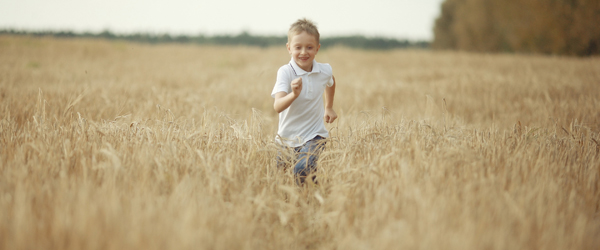by Jae Gruenke, GCFP
When a runner comes to me for help with their form, one of the questions I ask before looking at how they run is, “Is there anything you’re trying to do with your form when you run?”
Honestly, even though as a running technique teacher I’m of course very vigorously in favor of runners improving their form, I’m always relieved when the answer is, “No.”
The reason is that when people work on their running form they tend to go astray. When I watch runners who have been working on their form do their “best” running and then run again without trying to run well, the second version is always better.
I believe the reason for this strange phenomenon is the belief that doing anything correctly takes work, discipline, and effort.
When a technique-minded runner feels a sense of discipline, effort, and, for want of a better word, neatness in their running, they assume these are a sign their form is correct, or at least better than what they do naturally.
But in fact all these sensations are signs that the runner is working harder, and that means their form or technique is actually worse, not better.
Let’s step back for a minute and think about what form or technique (I use the words interchangeably) really means in running.
Unlike, say, gymnastics or figure skating, aesthetics aren’t a goal of running. You don’t train day after day to make sure there isn’t a pinky out of place and your turnover is dazzling in the hope that the judges will score you higher.
The only reason movement matters in running is that it makes it easier to cover ground, allowing you to run either faster or longer or both, while staying healthy.
In other words, a feeling of discipline or correctness has nothing to do with the goal of running technique. Instead of that, what you’ll feel when your technique is getting better is that running feels more comfortable and easier.
Because it is so hard for us to believe that what is easy is right – let’s not get caught up in why, that’s a whole other can of worms – people sometimes grasp for an exception. Something like, “well my new running technique will be easier once I’m strong enough and/or used to it.”
But something is either easier or harder. You know right away. If it’s harder at first, then gets easier once you’re used to it, that’s because you got stronger. And the fact it requires more strength means it’s harder than what you were doing before.
We evolved to run; it’s built into our bodies. All running form mistakes come from adding extra effort that doesn’t belong in running, thus preventing you from using your body the way it really works. Your structure and nervous system seek good technique the way water seeks lower ground, and if you don’t erect dams and blockages your movement will flow in that direction. Good form is the path of least resistance.
The only way to effectively “work” on your running form is not to work at all, but instead keep feeling for how you can reduce your effort, keep asking yourself where you feel tension or work, and seeing if you can change how you’re moving a little bit so it fades away.
You can trust your body to feel what works. You might not be sure at any given moment what’s right, but if you use the easier/harder test you’ll be able to tell what’s better and what’s worse, and over time you’ll feel your way to better running.
[jbox color=”yellow” icon=”http://naturalrunningcenter.com/wp-content/uploads/2016/01/Jae-60×60.png” title=”Jae Gruenke, GCFP”]
Jae Gruenke is a Certified Feldenkrais Practitioner, running technique expert, and founder of The Balanced Runner™ in New York City and The Balanced Runner UK in Edinburgh, Scotland. Known as a “running form guru,” she has helped runners from beginner to Olympian relieve pain and improve their performance, and she specializes in helping runners whose problems have persisted despite medical treatment.
[/jbox]


Thank you for a great post Jae, it really got me thinking on how I TRY to run better.
It reminded me of a book I read that was one of my turn points as a learner in life. The book is “Inner skiing” by W. Timothy Gallwey. Although I am not a skier, the book is all about unconscious learning process, namely letting the body learn the movements on its own rather then thinking about how to move. I highly recommend this book.
Although I disagree on one point. Doing what is easy is not always what is best. Sitting around all day is easier than moving all day, walking around with a sloppy posture is easier than maintaining a good posture. Doing what is easy sometimes just means being lazy.
When it comes to learning a new skill (or re-learning in case of running), I do think that it is important to be mindful, feel the body movement and let the body do what it knows best – learning how to move. To my opinion it is all about body and mind connection, about doing what feels right rather than what feels easy.
Amit
Yes, letting adaptation makes its work through natural running is the best long-term mean of perfecting form, however I think that running form drills are a good way to enhance technique and form.
http://www.runningperformancetraining.com/my-running-form-drills-routine/
thanks for the link Chris….yes drills are fun and really helpful
Great post by miss Jae, makes all so much sense!!!